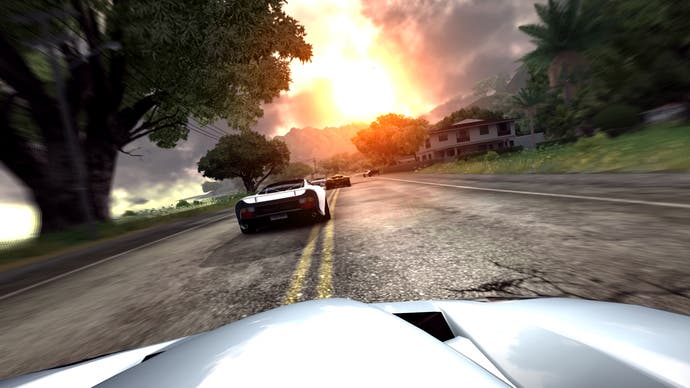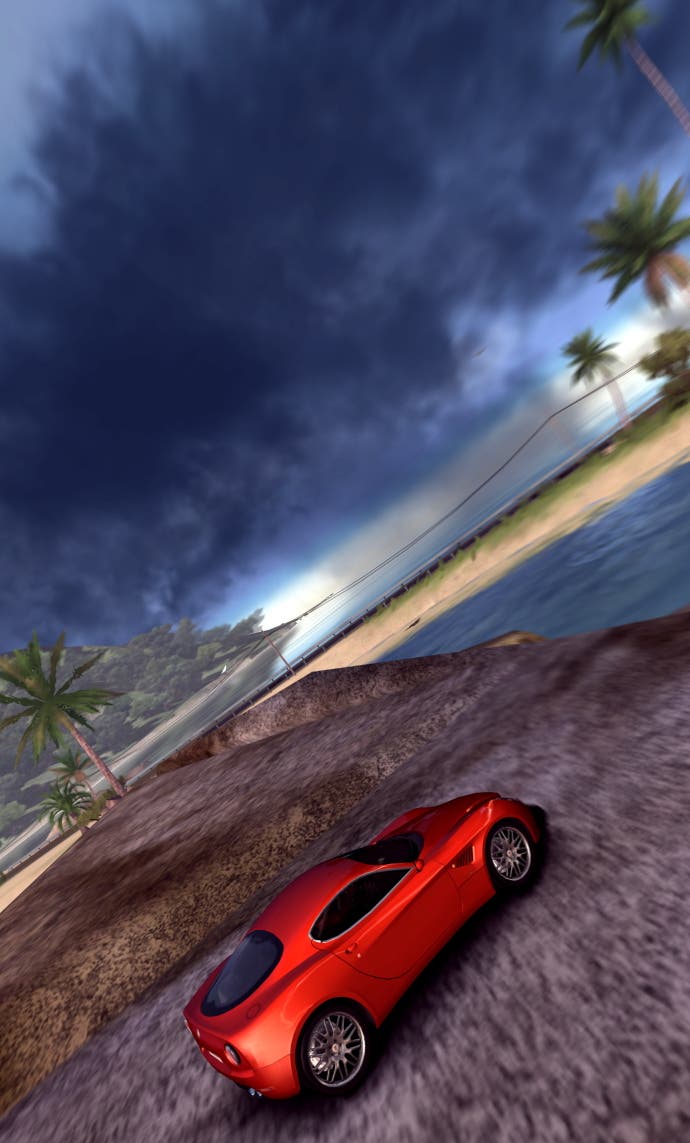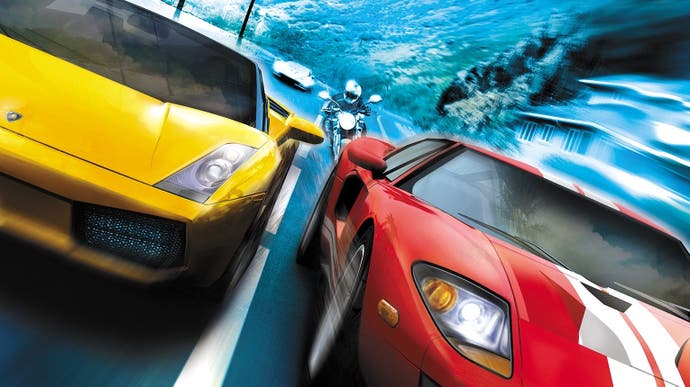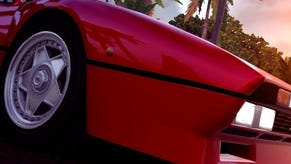The Double-A Team: Test Drive Unlimited drew a new horizon for racing games
Traffic island.
Did you know that they're making a new Test Drive Unlimited? It's true! Kylotonn, the French studio behind the well-regarded WRC and Isle of Man TT series, has acquired the Test Drive licence from Atari, and there are veterans of the Eden Games team that made it working at the studio. It's exciting, but also a little scary. Kylotonn is a small studio owned by a small publisher. Test Drive Unlimited was something of a scrappy underdog in its day, too, of course, but back then its only competition in open-world racing was Need for Speed, a very different beast. Now, a new TDU would be going up against a game that has taken its rough frame and polished it to a gleaming finish: Playground Games' Forza Horizon. Why bother?
It is, however, only fair that the French series returns to try to grab a slice of this pie: it wrote the recipe. Forza Horizon simply wouldn't exist if it wasn't for 2006's Test Drive Unlimited. Released so early in the last generation that it beat the PS3 to market, TDU dreamed of a different kind of real-world road racing to the studious lapping and tweaking of Gran Turismo and Forza Motorsport. Inspired by the original 1987 Test Drive's winding ribbon of cliffside tarmac, this would be a game about the glory of the open road; about exploring exotic, sun-kissed landscapes; about freedom and danger as you weave through traffic; about cruising as well as going flat out.

Revisiting the game on Xbox 360 now, it's almost hard to believe it launched on the same platform that hosted the first Forza Horizon in 2012. It wobbles on what was then new hardware, stretching the limits of what the Eden team could achieve with it. The visuals now look muddy and plain, the car handling is agricultural, the frame tears and stutters and the human characters all look like weirdly sarcastic shop mannequins. (Did I mention the game is French?) Some aspects of the game seem embarrassingly dated now: the fashion brands (remember when people wore Ecko Unltd hoodies with cargo shorts?); the glossy, Second Life-style lifestyle MMO elements; the missions that require you to give ladies a lift home with their shopping. Suddenly the noughties seem like a distant land.
But good lord, it can still intoxicate too. It turns out that there are a few specific ingredients in Test Drive Unlimited that haven't been successfully copied by Forza Horizon or, for that matter, anything else. So here is my entirely unsolicited advice to the Kylotonn team on what they need to preserve from the original TDU to set the game apart.

- Let me choose my upholstery colour. Long before Forza Vista, TDU offered the ultimate car-shopping experience. You could poke around the car in the showroom, rolling down the windows, turning the ignition, listening to the reassuring thunk of the doors. And although its customisation options are dwarfed elsewhere, this is the only game I can think of that lets you match paint and upholstery colours straight out of the factory catalogue to find the perfect combination. Beautiful.
- Don't put too many cars in it, and don't let me have all of them. The art and licensing teams can thank me later for this one. But it's not just about reducing the scope to something a small developer can manage. It's about the amazing sense of ownership TDU achieves. The way the game paces its economy, combined with the slowly expanding number of garage slots it gives you, forces you to make tough choices about what to buy; for the longest time, you can only afford one car in each performance band as you unlock them. You really invest in these machines, and consequently you love them all the more. Forza boasts an incredible selection, but its Gacha machine spits them out at a rate you can never keep up with. It becomes collection for collection's sake, and looking at your garage is overwhelming. Going to your garage in TDU - which, by the way, is a physical space at your home - you feel the glowing pride of the curator.
- Keep it real. Where Forza goes for condensed, fantasy versions of real-world locations, crafted to provide excitement wherever you turn your wheel, TDU and its sequel recreated the islands of Oahu and Ibiza more or less to scale, with a more or less accurate road map. It isn't all thrilling; there's a lot of freeway. But it feels like a real place, and driving fast there feels illicit, whereas Playground's wonderful creations feel like, well, playgrounds: the real shrunk down and smoothed out into a sort of racing paradise.
- Pile on the traffic. Comparing TDU to the latest Forza Horizon, I notice that in the latter game, the traffic is spaced out just enough that, with a bit of skill, I can thread through it without ever having to take my foot off the gas. Not so in the former. You're constantly having to lift off, swerve, tap the brakes, check your speed. When you hit long stretches of freeway, every mile per hour you can add feels hard won and puts your heart further in your mouth. The great sensation of speed here has nothing to do with a dolly zoom camera effect or a whooshing sound in the audio mix - it's all to do with your awareness of the risk you're taking.
- Do the car delivery missions. All of the above come together in my favourite part of TDU: missions that ask you to deliver an exotic car, one you probably can't afford yourself yet, from one end of the map to the other. Crucially, there's no time limit, but every scrape you add to the car knocks thousands of dollars off your fee. You can dawdle at 30mph the whole way if you like, but then you will have missed the chance to hear this Ferrari Enzo in song, to see what it can really do. So you watch the traffic, and the lights, and the junctions, cautiously but with an eye to an opportunity to open up the throttle. You spot your chance, floor it. The thrill is incredible.
No other racing game has ever made me feel like that. In no other racing game do I consciously move between different registers of driving: relaxed, fast or racing. I just go as fast as I can because that's what you do. TDU showed another way. It was a gem, and a new one will always be welcome to show us a different way to drive.



